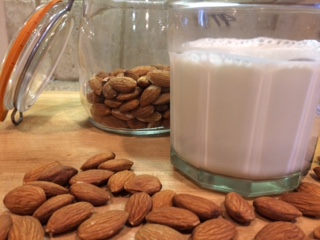The Sacral Chakra, or Swadhisthana, is the second of the body’s Energy Centers. It is located in the abdominal area between your Pubic Bone and your Navel. It is responsible for our fluidity in relation to others, our ability to relate in an intimate way, and our creative side.
This Chakra is composed of the Water Element. All of Nature is composed of a combination of the 5 Elements (Space, Air, Fire, Water, and Earth). Each of the first 5 Chakras are composed of one of the 5 Elements. The purpose of each Chakra is related to which Element it is composed of.
In my understanding of the Energy Centers, the Sacral Chakra is actually composed of a combination of the Root, Sacral, and Heart Centers. We all know that our interpersonal relationships can be highly complicated and complex. It is due in part of all of the Life Lessons that have the possibility of being learned as we interact with others. If we lived on a desert island by ourselves, we would have a far lesser opportunity to work on our lessons.
The Sacral chakras and the subdoshas
The Subdoshas that mostly affect the Sacral Chakra are Apana Vata and Sadhaka Pitta. Apana Vata is located in the lower abdominal area and it is a downward moving Vata. It is closely related to the Root Chakra. Sadhaka Pitta is located in the heart area and in the brain. It governs our emotional and physical heart. It is also the part of the brain that processes our experiences.
Physical concerns that are connected to the Sacral Chakra may be: menstrual problems (uterus, ovaries, cervix), prostate problems, sacroiliac joint, sexual problems, erectile dysfunction, menopause, male and female hormone problems, lower back issues, hip replacement, bladder, uterine fibroid tumors, endometriosis, ovarian cysts, vaginal concerns, urogenital concerns in general.
Emotional concerns that are connected to the Sacral Chakra may be: feeling stuck, doubting intuition, fear of abandonment, not easily satisfied, not relating to others, difficulty in opening up to others, social status, financial security, boundaries in relationships, this is the place where fantasy begins as we interact with our family and friends.
Since we are a mind / body connection, it is very important that we realize that our thoughts and emotions will have an impact upon our body. Physical problems that arise from Second Chakra issues are very common. The old, unprocessed emotions will make a “sticky” type of emotional ama (toxins) that can be difficult to remove. Once we are set in our patterns, they appear to be normal to us. Holding on to old past hurts, sadness, and disappointments with others will find their way into the Sacral Chakra. We need to first recognize that they are there, and then begin to take the steps to eliminate them.
Treating the sacral chakra
There are many wonderful ways to address the Sacral Chakra imbalances. A multi dimensional approach is usually best.
Yes, it is good to put attention on the physical manifestation of the imbalance with Ayurveda, Yoga Asanas, Massage, Western Medicine, Chiropractic, etc – but, the deeper underlying concerns must be taken into account in order to free yourself of the possibility that problems won’t come back in the future.
Mantra for the sacral chakra
The Mantra for the Sacral Chakra is Vam. Gently repeating this mantra while putting your attention on your abdominal area will assist in the healing process. Many find it helpful to fall asleep at night with their hands placed on their abdomen and silently repeating the Mantra Vam.
At Shaktiveda, we approach all concerns with first looking at what may be the subtle causes. In the pulse, there is a layer that will indicate what Chakra and Layer of the Etheric Body (Kosha) someone is working on. With this understanding, it makes it much easier to fully address the health concerns on all levels.
Experience the Joy that can be experienced by the Shaktiveda Ayurveda approach to health and well being.







